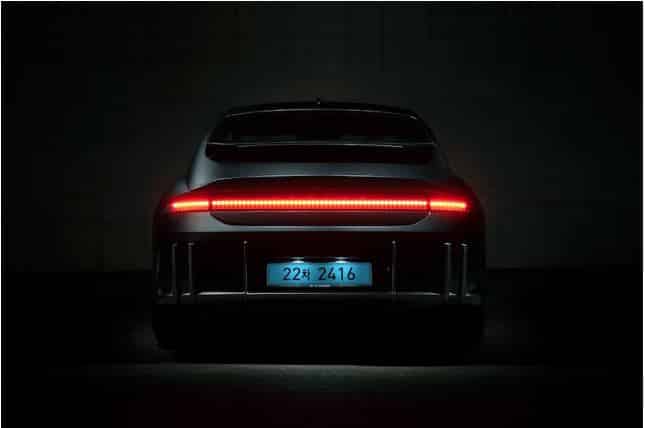The Drawbacks of Choosing a Fancy Number Plate for Your Car

In India, every motorised road vehicle needs a vehicle registration plate, also known as a “number plate.” Regional transport offices (RTOs) are responsible for issuing this licence plate all around the state. In accordance with the RTO’s number plate regulations, the number plates are placed on the front and back of the vehicle.
Also Read: 10 Tips to Effectively Manage Payroll Processing
Rules 50 and 51 of the Motor Vehicle Act of 1989 contain the following provisions:
- The registration letter and number on number plates for 2-wheelers and light motor vehicles (LMVs) should be in black on a white background, while those for commercial vehicles should be in black on a yellow background.
- The letter and number sizes for all vehicles must match those specified in the booklet for each category.
- Post your number plate number where it is indicated in the brochure on the front and back sides of your car.
- Fancy lettering is not allowed.
- No further names, images, or artwork are shown.
According to the Ministry of Road Transport and Highways, all vehicles sold up until April 2019 must have high-security registration plates that antitheft alarms can detect. Vehicles lacking colour-coded fuel tags or HSRP stickers are now subject to a fine from the Delhi Transport Department.
Important Facts about Car Number Plates in India
Here is all you need to know about standardised car number plates in India:
- Format: In India, the format of a standard car number plate is “XX-YY-XXXX”. The first two letters denote the state where the vehicle is registered, followed by two digits that represent the RTO where the vehicle is registered. The last four digits are a unique number assigned to the vehicle.
- Size: The size of a standard car number plate in India is 500 mm x 120 mm for most vehicles. For two-wheelers, the size is 200 mm x 100 mm.
- Font and color: The font used on a standard car number plate in India is “FE Engschrift,” and the color is black on a white background for private vehicles, and yellow on a black background for commercial vehicles.
- Material: The standard car number plate in India should be made of aluminum or a high-quality plastic with a reflective coating.
- Registration: All standard car number plates in India must be registered with the Regional Transport Office (RTO) and should meet certain guidelines for size, font, and color.
- Legal compliance: It is important to use a standard car number plate in India to avoid legal trouble. Using a non-standard or unauthorized number plate can result in fines, impounding of the vehicle, and even imprisonment.It is a mandatory rule just like keeping a car insurance policy.
- Replacement: If your car number plate gets damaged or becomes unreadable, it is important to get it replaced with a standard number plate as soon as possible. This helps ensure legal compliance and easy identification of your vehicle.
Also Read: How to Create Financial Plan in Business Plan
It is important to follow the rules and regulations regarding number plates to avoid any legal trouble and ensure the safety of yourself and others on the road.
Drawbacks of using a fancy number plate
Choosing a non-standard number plate for your car in India can have several drawbacks, including:
- Legal issues: Using a non-standard number plate is illegal in India. The law requires that all vehicles should display the registration number in a specific format, including the size, color, and font. A non-standard number plate can attract legal action, which can result in hefty fines, impounding of the vehicle, and even imprisonment.
- Difficulty in identifying the vehicle: A non-standard number plate can make it difficult for authorities to identify the vehicle. This can lead to confusion in the event of an accident or a crime, making it difficult for authorities to take appropriate action.
- Risk of accidents: A non-standard number plate may not be easily visible to other drivers on the road, especially in low light conditions or bad weather. This can in turn increase the risk of accidents and collisions.
- Difficulty in selling the car: When it comes time to sell your car, a non-standard number plate may not be as appealing to potential buyers. Many buyers prefer standard number plates and may not be willing to pay extra for a non-standard plate. This can make it difficult to sell the car and may result in a lower resale value.
Also Read: Online Life Insurance Sproutt Life Insurance | Otto Insurance
- Misuse by others: There have been cases of criminals using cars with non-standard number plates to commit crimes. In such cases, the car owner can be held responsible if they are unable to prove that they were not involved in the crime.
In summary, choosing a non-standard number plate for your car in India can have serious legal and safety implications. It is important to follow the rules and regulations regarding number plates to avoid any legal troubles and ensure the safety of yourself and others on the road. It is crucial that you understand the legal types of number plates in India and follow the vehicle regulations as a responsible Indian citizen to make traffic management simple.
When it comes to upholding vehicle law and order in India, the font and size of the number on the plate are equally important. You must display a number plate that clearly and prominently displays your vehicle’s number from a distance. According to Indian law, dishonest people who commit crimes may choose a costly licence plate to conceal their identity. Therefore, if you are discovered driving with a fancy number plate, even if you are innocent and just wanted to seem stylish, you could face major legal issues.
Also Read: Who Has to File TDS Returns?




